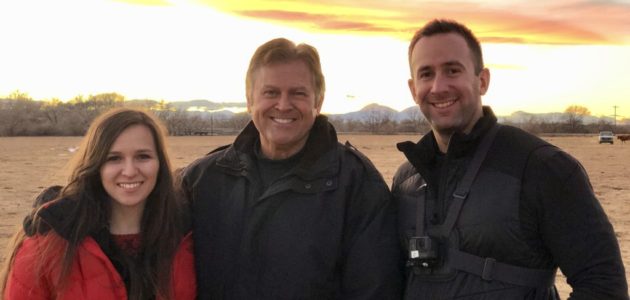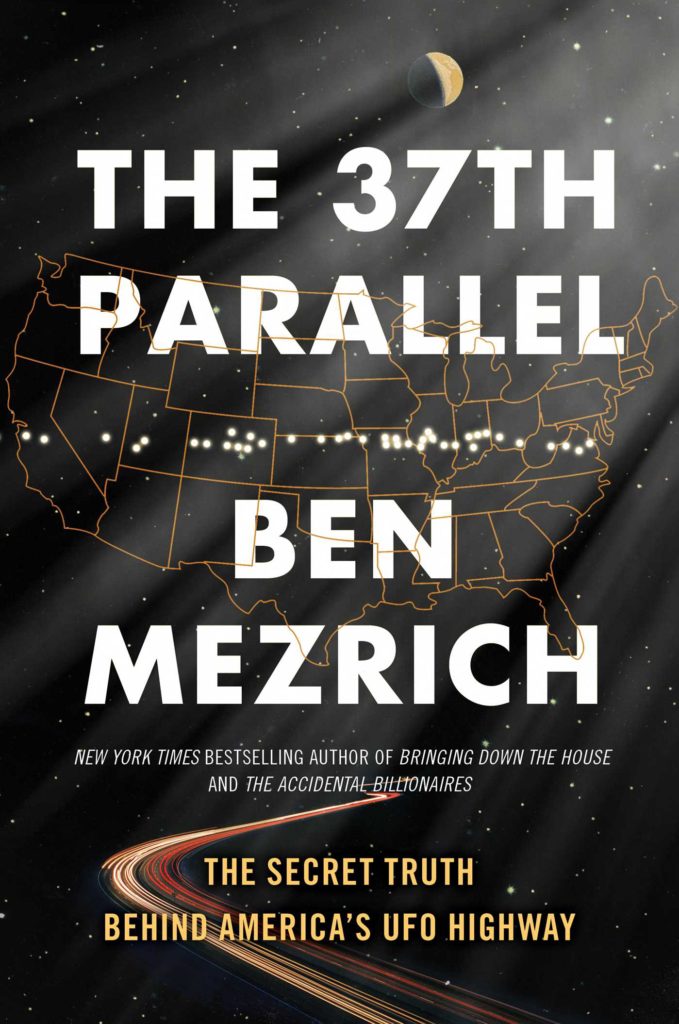Anomalous Metal Alloy Found at 1947 Roswell Crash Debris Site!
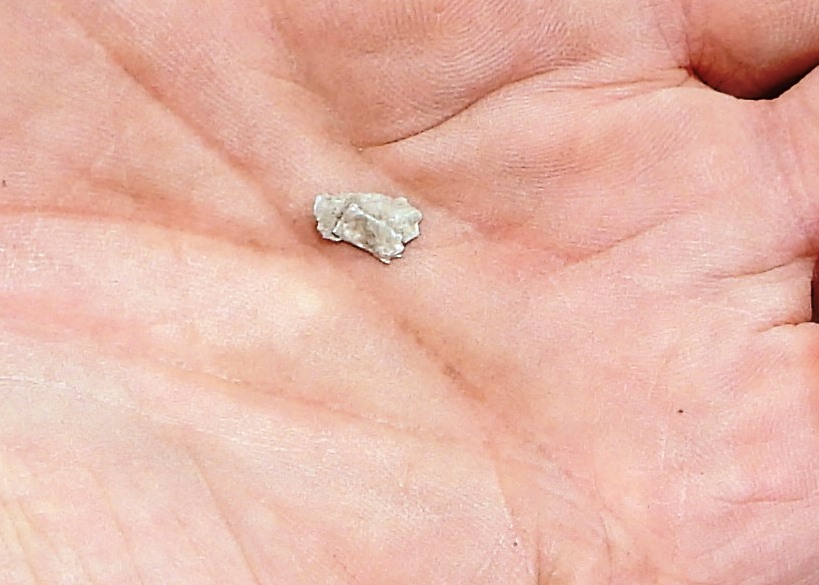
On June 3rd of this year, Frank Kimbler and I found pieces of metal out in the middle of the New Mexico Desert at the famed 1947 Roswell Crash Debris Site. I released a blog post about that on June 16th.
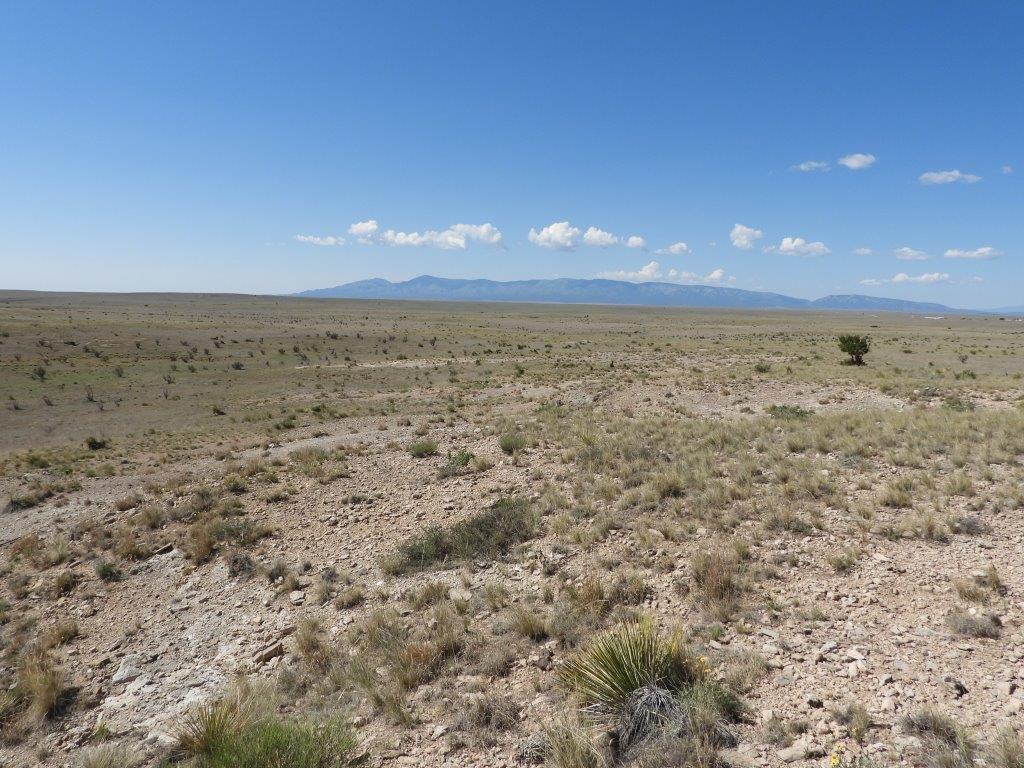
This is the site where back in July of 1947, W.W. Mac Brazel and his son Vernon found this unusual looking debris scattered within a 200–300-yard area, thus starting the Roswell UFO crash story.
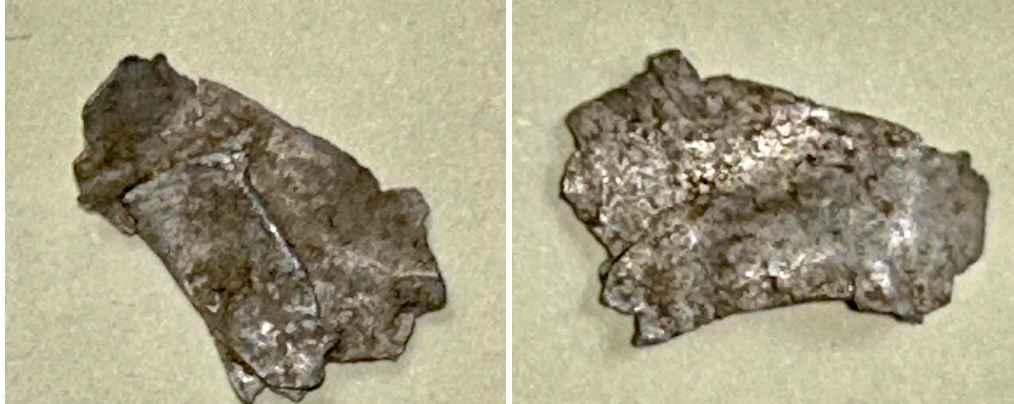

On June 23rd of this year, I released a blog post stating the debris we had found is an Aluminum Alloy after testing it at the “Colorado Metallurgical Services” company, in Aurora, Colorado.
Testing the piece on an X-Ray Spectrometer, the XRS test clearly shows AL (aluminum) is the dominating element. Other elements like, Si (silicon), Mg (Magnesium), Mn (Manganese), Fe (iron), Cu (Copper), Zn (zinc), Cr (Chromium), Ni (Nickel) and Co (cobalt) are present. Those elements combined make this piece of debris an Aluminum Alloy.
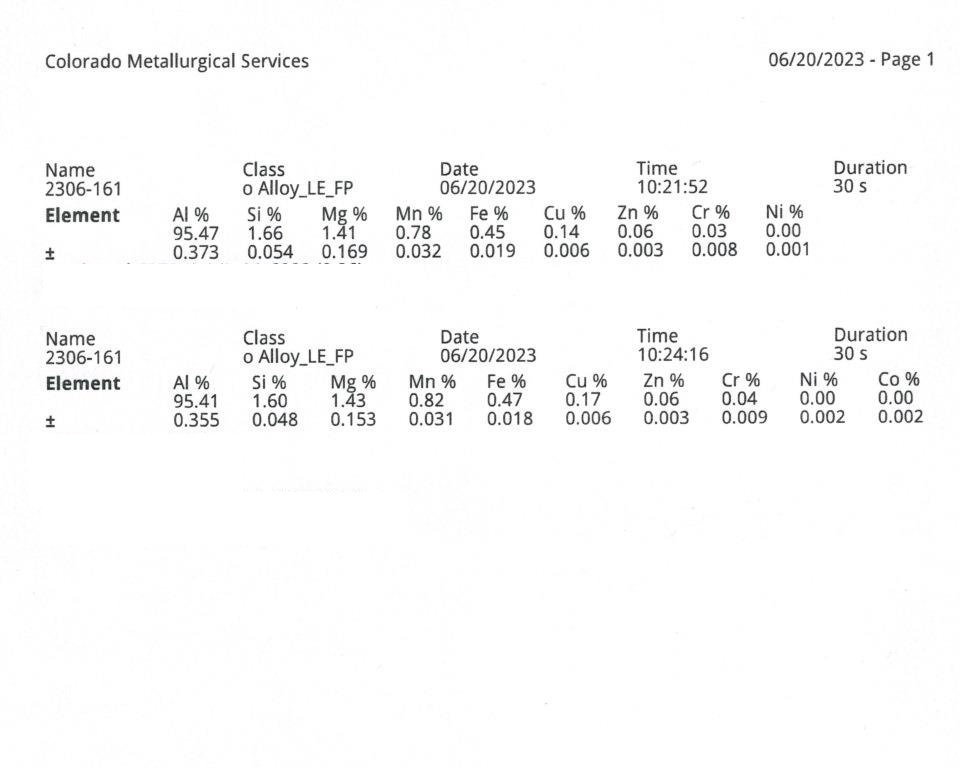
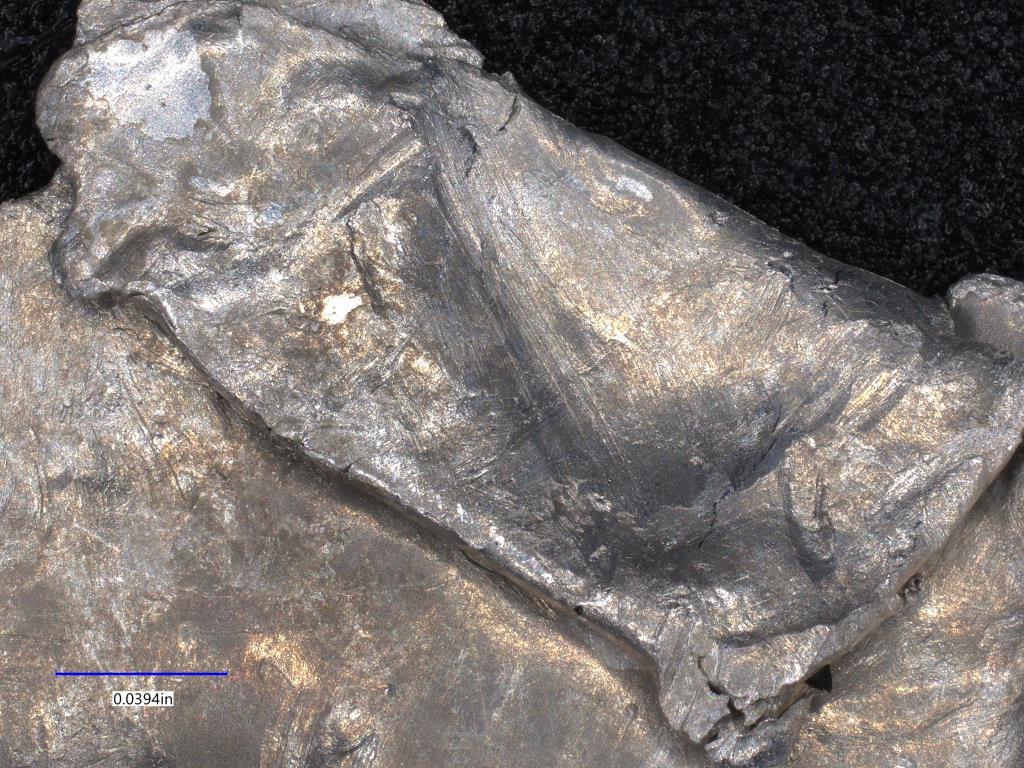
After speaking with Frank and analyzing the test results, it was determined this piece of alloy appears to be a non-registered alloy in the 6000 series.
Now more testing is needed to be done to verify this analysis and more debris is needed for comparison analysis.
So back to the debris site Frank and I went on June 29th.
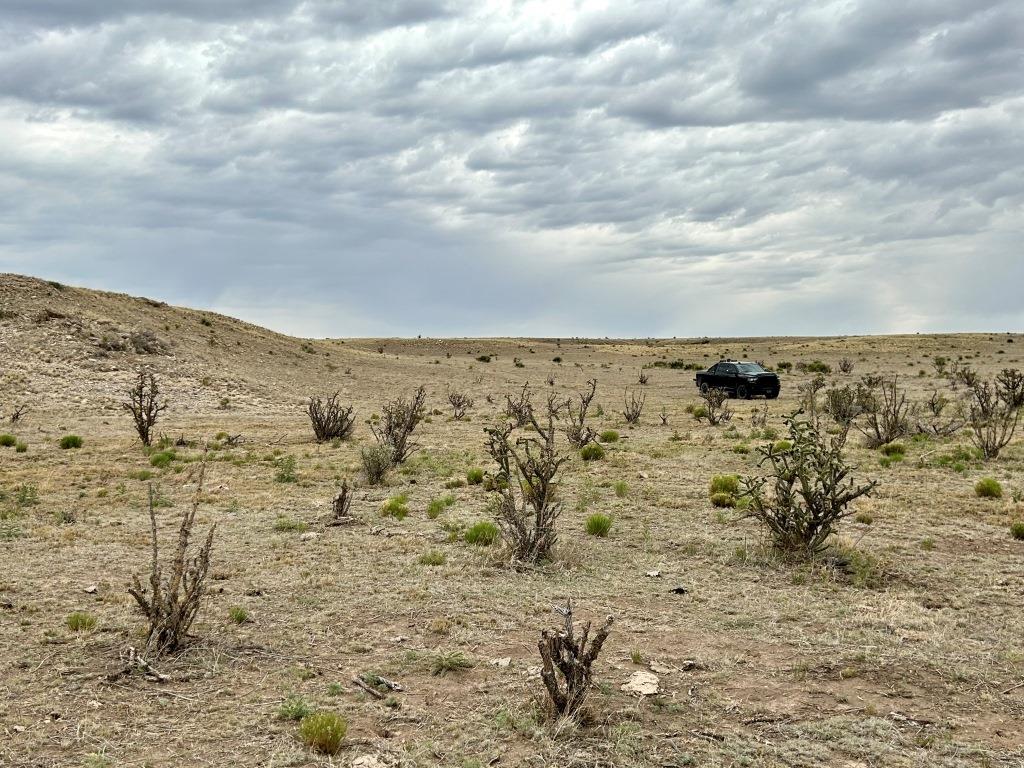
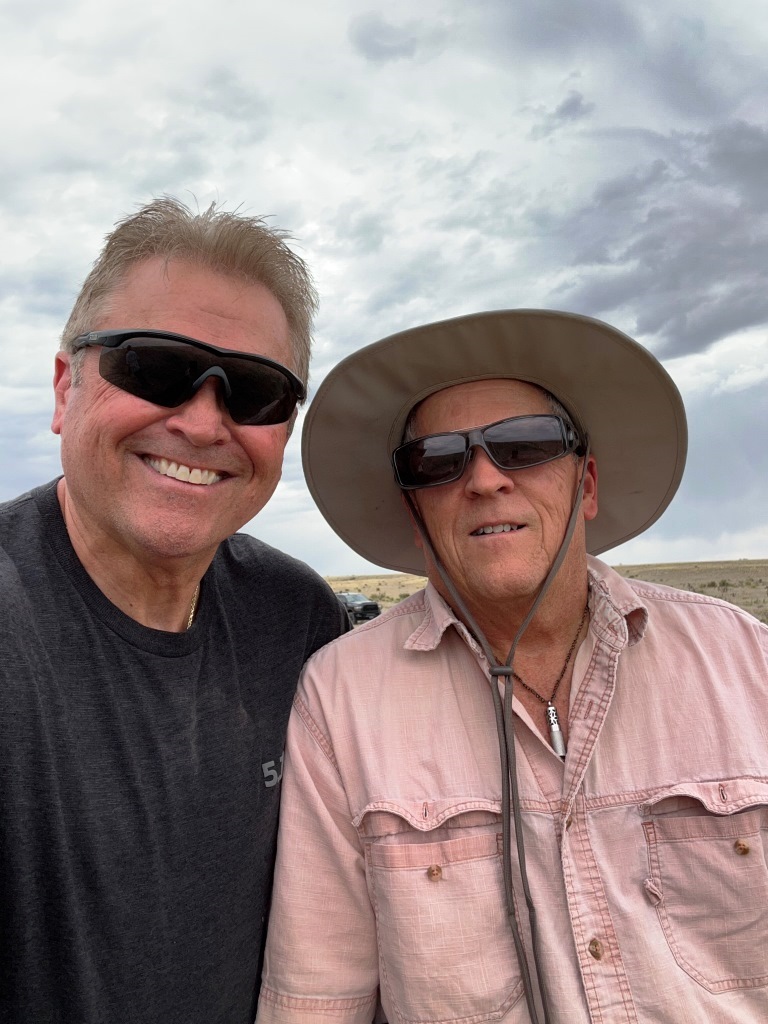
This time with me having a better metal detector, Frank Kimbler and I scoured the desert for hours and found more metallic material. The following picture shows Frank painstakingly sifting through the dirt looking for the piece of debris his detector located.
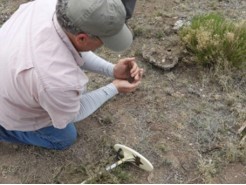
These are the pieces Frank found.
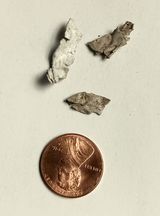
These are the pieces I found.
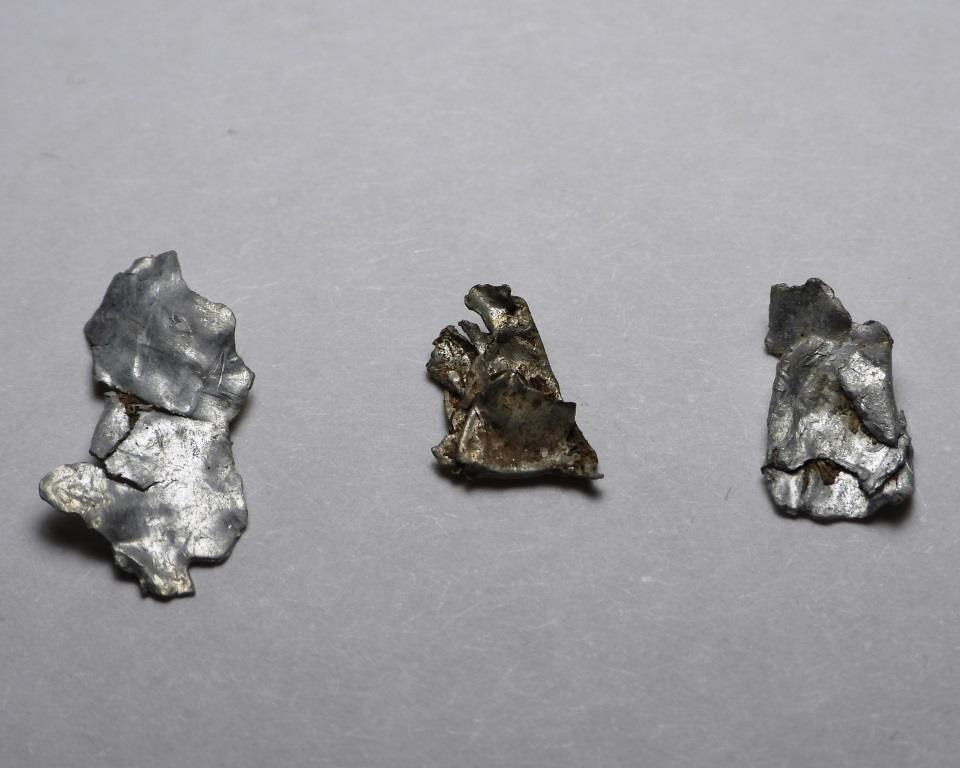
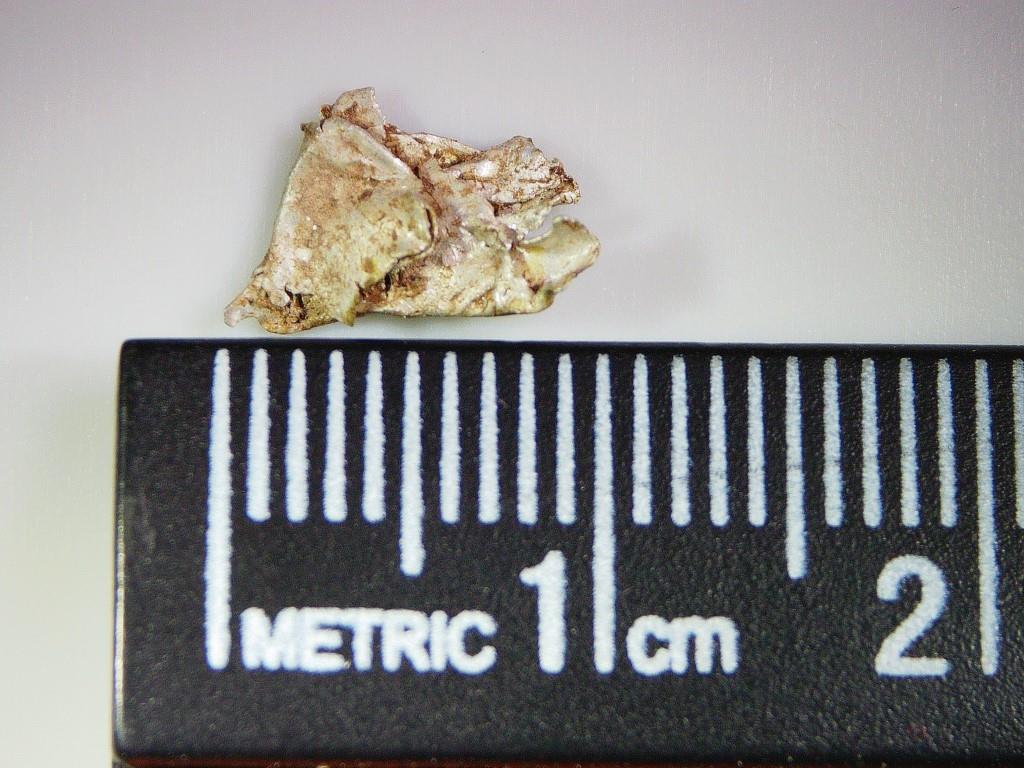
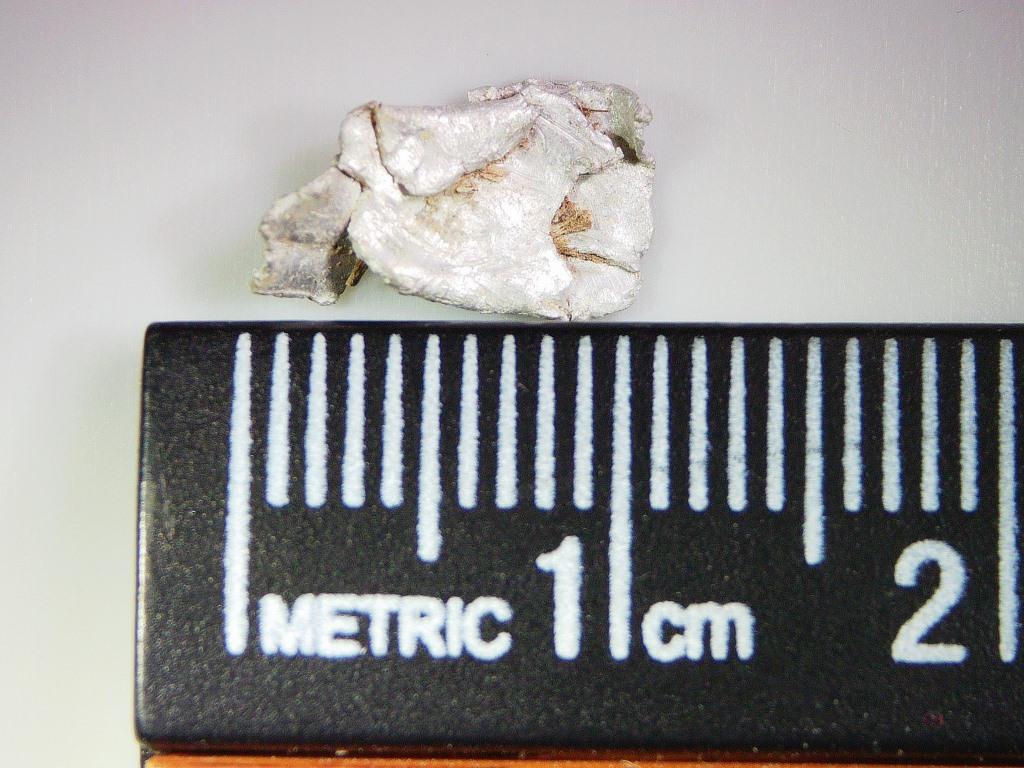
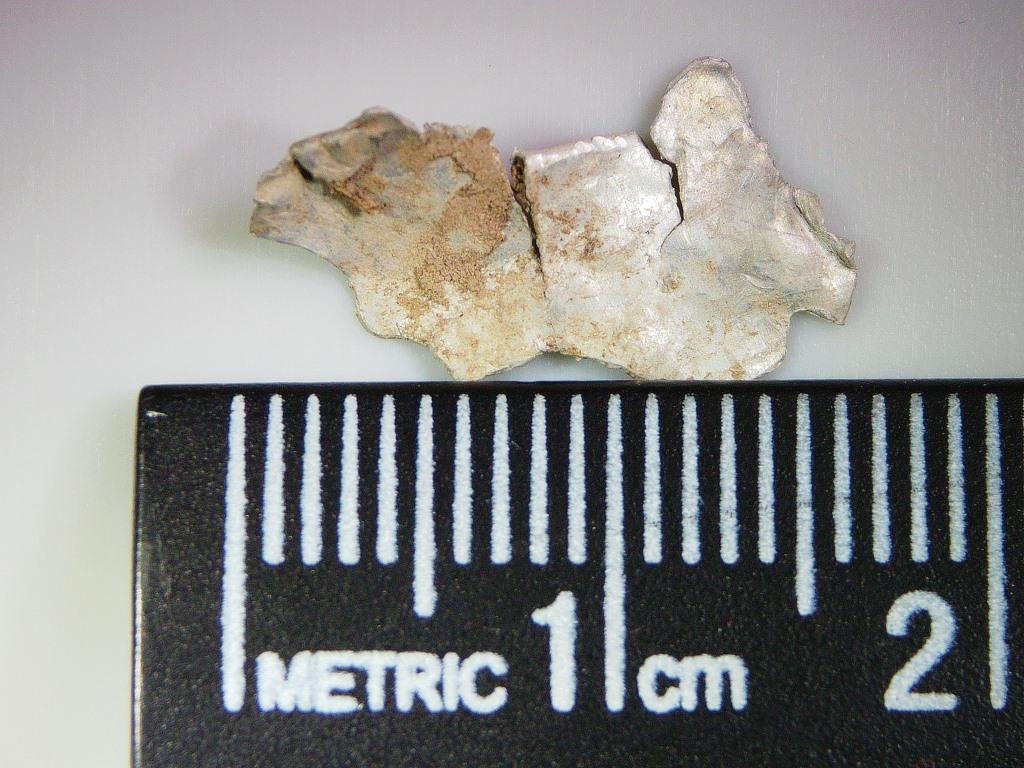
Sizes of the pieces I found.
With more pieces in our possession, it’s back to the lab for more testing!
On August 1st, I headed back to “Colorado Metallurgical Services” company, to do new testing. This time on a “SEM”, Scanning Electron Microscope.
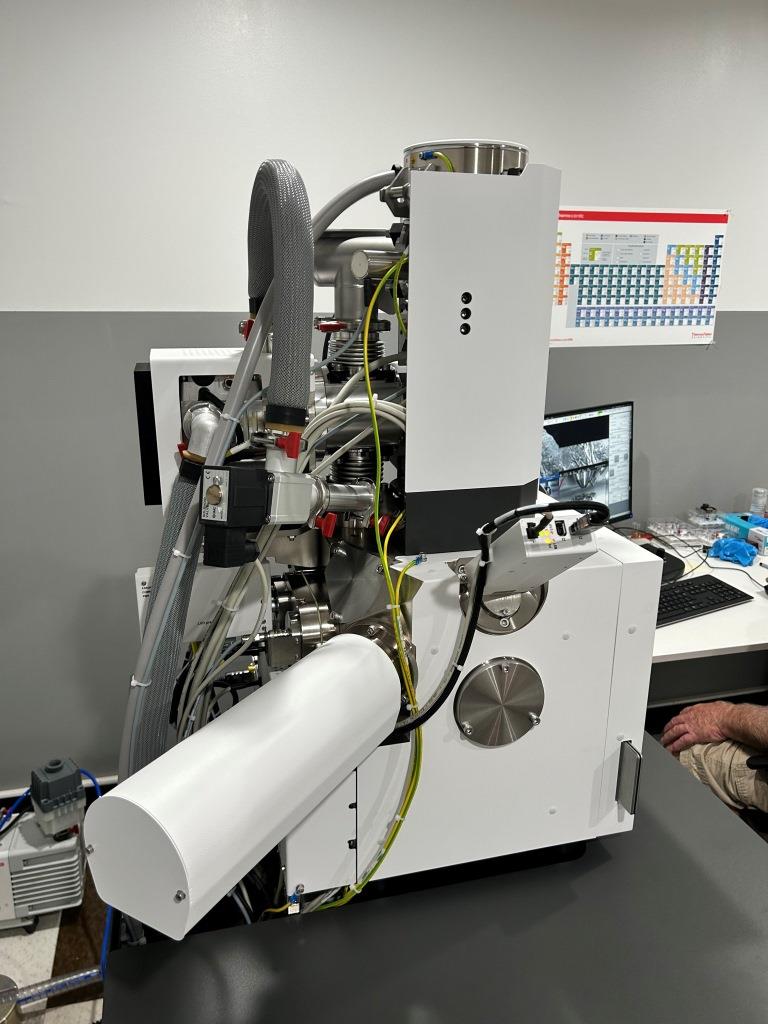
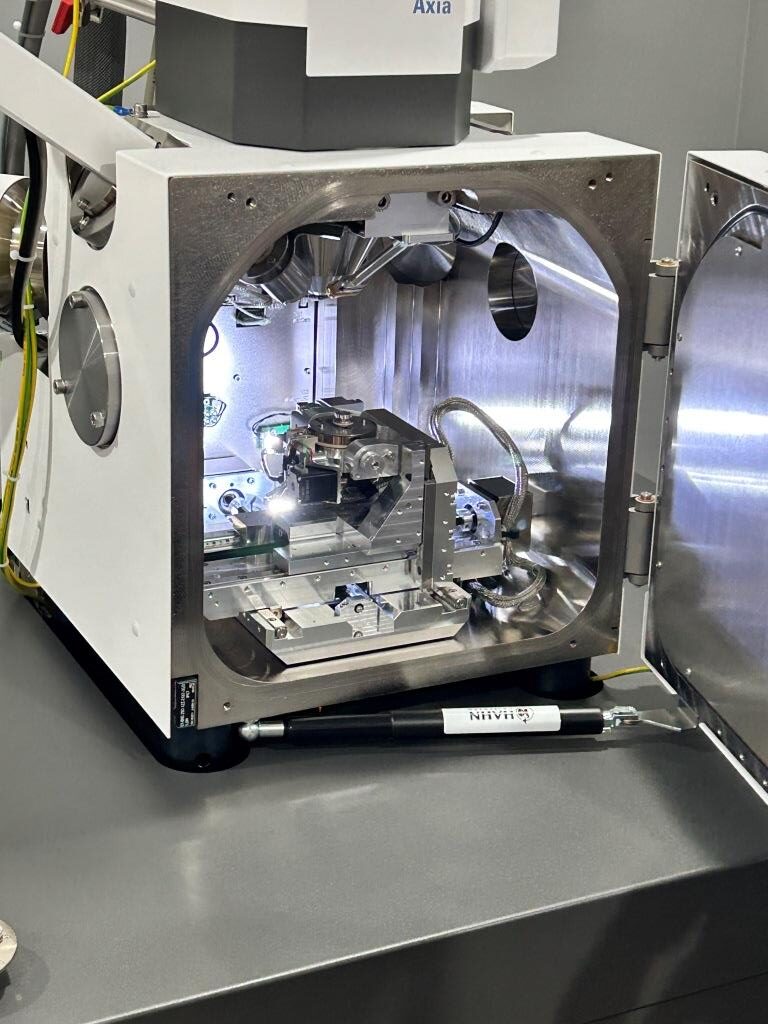
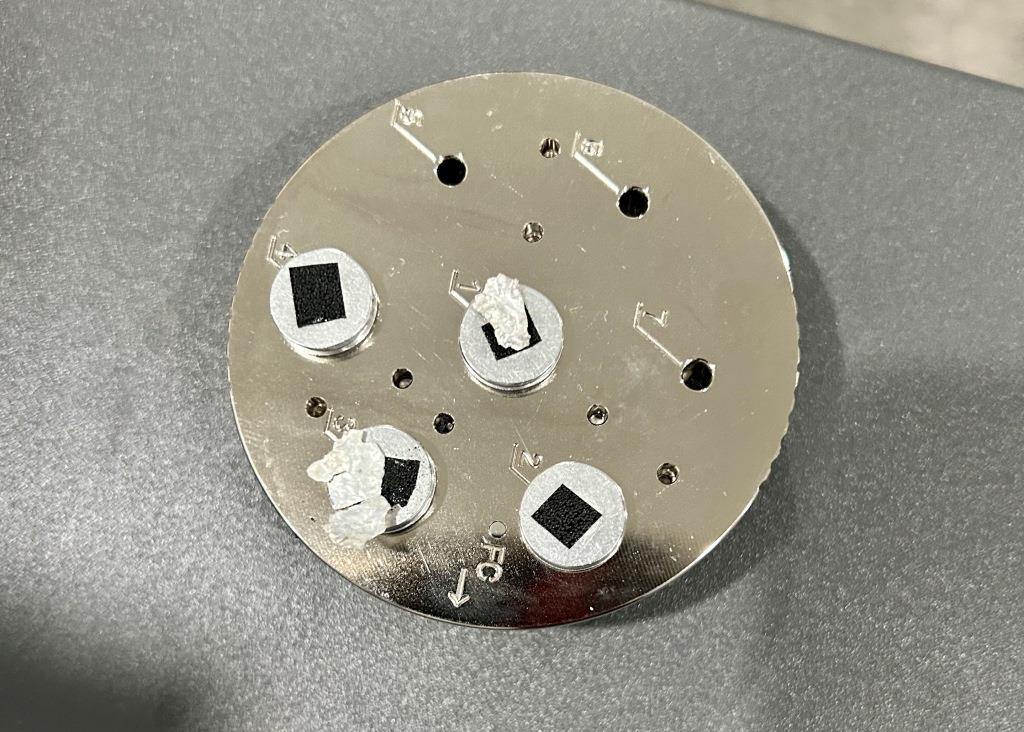
A “Scanning Electron Microscope” (SEM) produces an image of a sample by scanning the surface with a focused beam of electrons. The electrons interact with atoms in the sample, producing various signals that contain information about the surface topography and composition.
Testing my previous sample found on June 3rd and another sample found on June 29th, we found the June 3rd sample was still indicating the 6000 series aluminum alloy and the other sample was leaning towards a 3000 series aluminum alloy. I decided to focus a little more on the 6000 series alloy (sample 001) because now I have the same piece of debris which was tested on two separate lab instruments getting the same results.
An unregistered aluminum alloy?
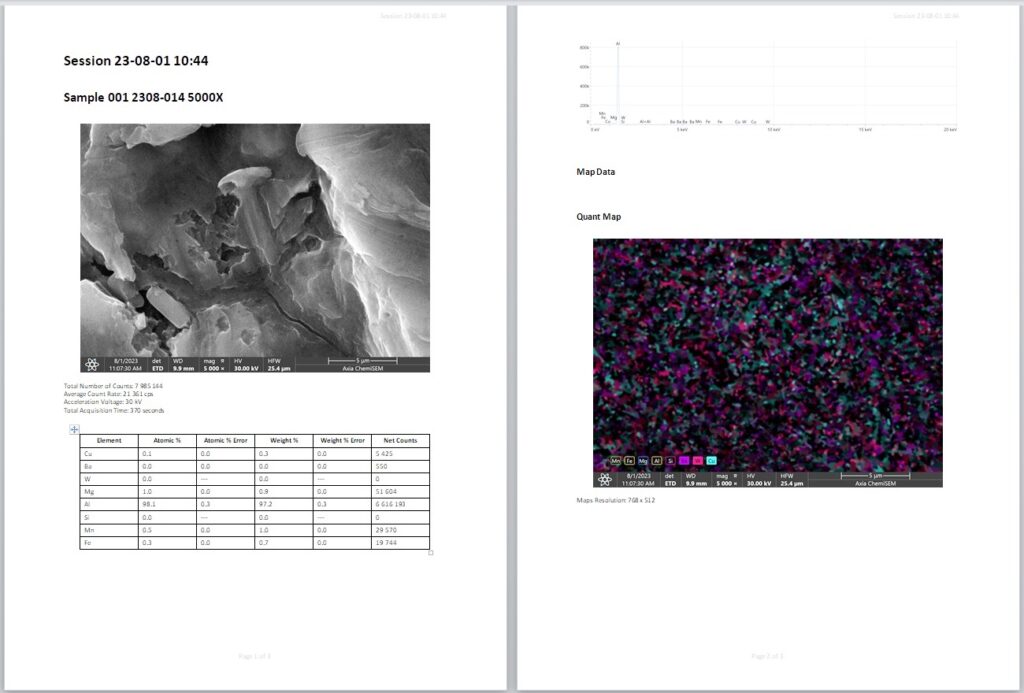
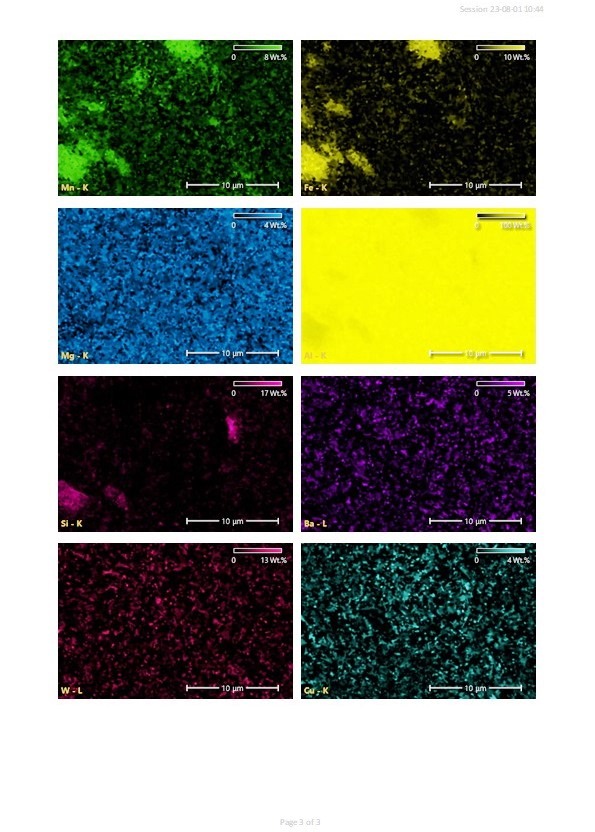
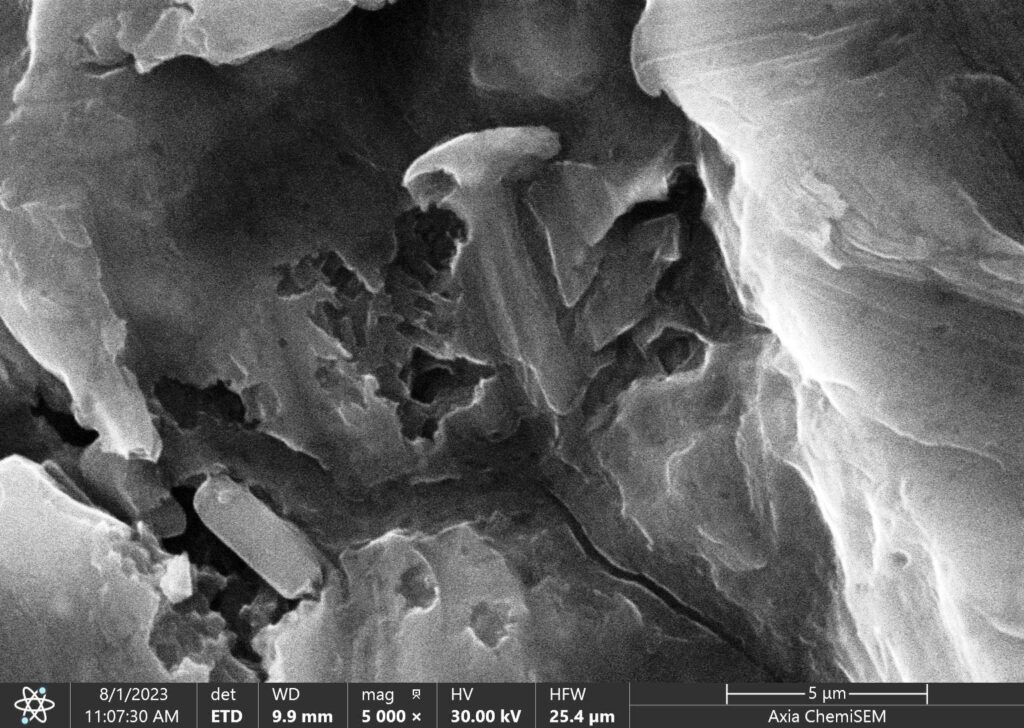
This image of sample 001 is magnified at 5000x. You can see the unit of measurement to the lower right shows a distance of 5 microns. A micron is a metric unit of measurement where one micron is equal to one-thousandth of a millimeter or ( 1 x 10 -6 ). This image is in microchip scale.
While I was having samples tested here in Colorado, Frank was having his samples tested in New Mexico.
This is one of Frank Kimbler’s samples which was tested at New Mexico Tech.
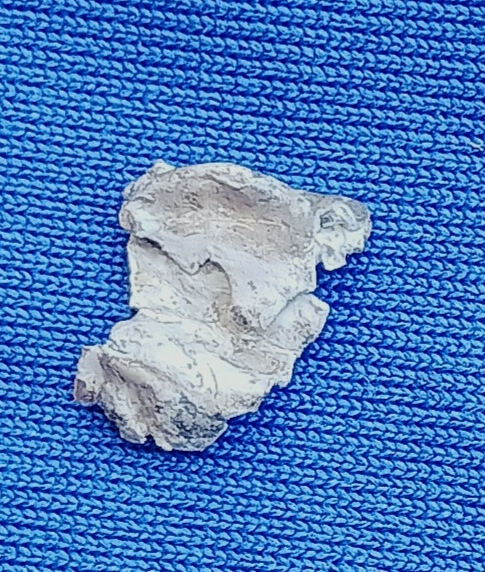
Debris samples were mounted to an epoxy base and the surface was sanded and polished to get better SEM results.
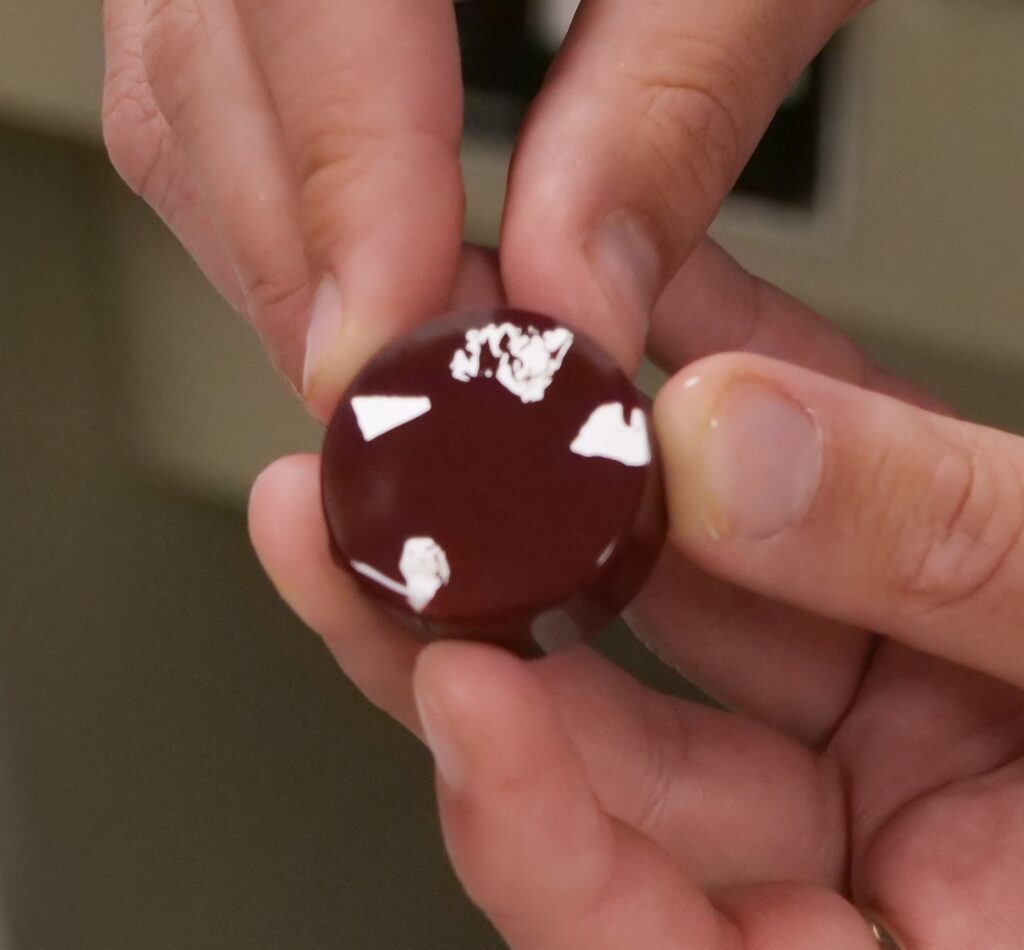
Placing the debris samples in the SEM.
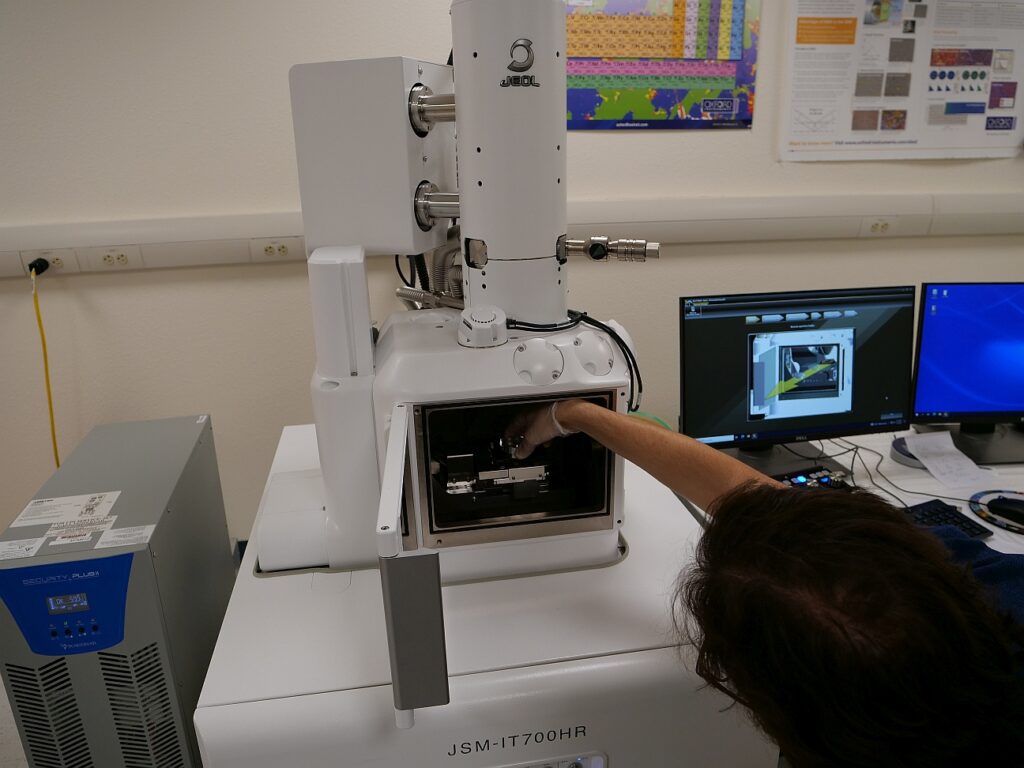
The following data is from Frank Kimbler’s debris samples.
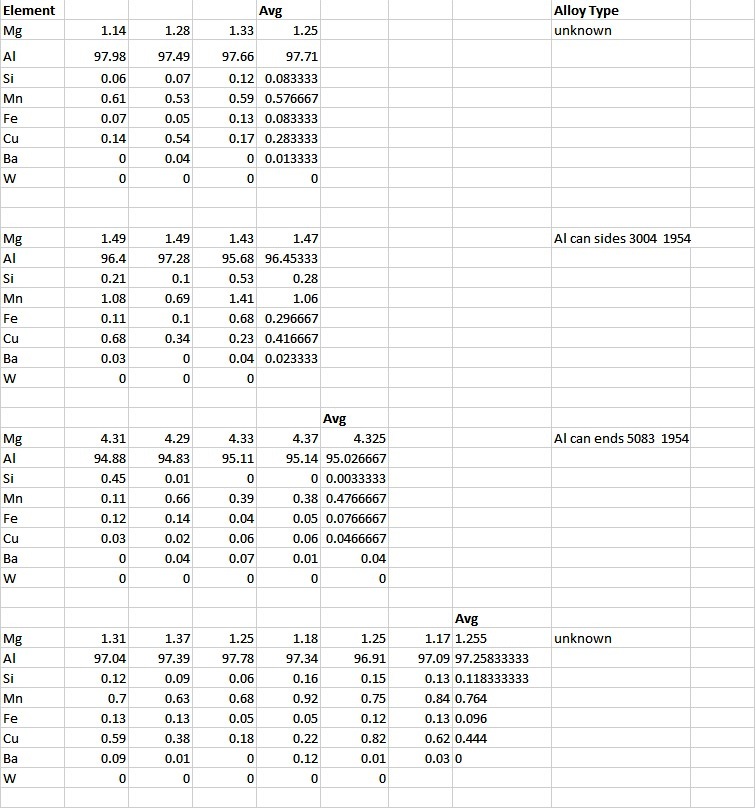
In conclusion, recently a total of six metallic specimens were analyzed at a metallurgical lab in Denver, Co using SEM (Scanning Electron Microscope) and XRF, and separate testing was done at New Mexico Tech in Socorro, NM using SEM-EDS .
Of the six specimens analyzed, three of them are aluminum alloys with element compositions that don’t match any known registered alloys. They are similar to 6000 series alloys, some of which are used in the aerospace industry. These compositions have low Si (Silicon), high Cu (Copper) and low Mn (Manganese), values compared to the other three.
These specimens have similar chemistry to other debris which were found at the crash site a few years ago by Frank.
The other “non anomalous” metallic alloys are similar to tops and sides of aluminum cans. The unknowns were buried deep, 3-6 inches and have a dark patina on the surface. The can-like material is shiny, with no patina, and found almost on the surface.
Knowing the remoteness of the area we have no idea why there is such a mix of materials. The metals are not abundant and sometimes it takes hours just to find a tiny fragment with today’s advanced metal detectors. We can only speculate that the area could have been salted by others, or even the military to through off investigators looking for clues at the crash site.
This is an interesting mystery.
Also, the lab data shows that the three anomalous specimens are not trash and are very unusual in their compositions. The heavy element barium was also found in the metal and that alone is very odd.
More analytical work will be done on these alloys to determine their exact nature, this is just the beginning of a long journey. At this time Frank and I cannot state these alloys are extraterrestrial, all we can say is current testing of these anomalous alloys don’t appear to be a commercial registered alloy.
Who knows?
Are these unusual alloys from a top-secret military project?
Will they be identified through a series of more testing?
Could more testing prove or disprove the 1947 Roswell Incident?
Maybe they are from another dimension?
Maybe extraterrestrial?
At this time, we can only speculate, but one thing we know is true.
We have enough evidence at this time to prove something crashed at this very desolate New Mexico site, leaving small pieces of an anomalous metal fragments showing extreme trauma, explosive in nature.
Note: Frank Kimbler contributed to this blog post.
Category: Roswell, The Z-Files






